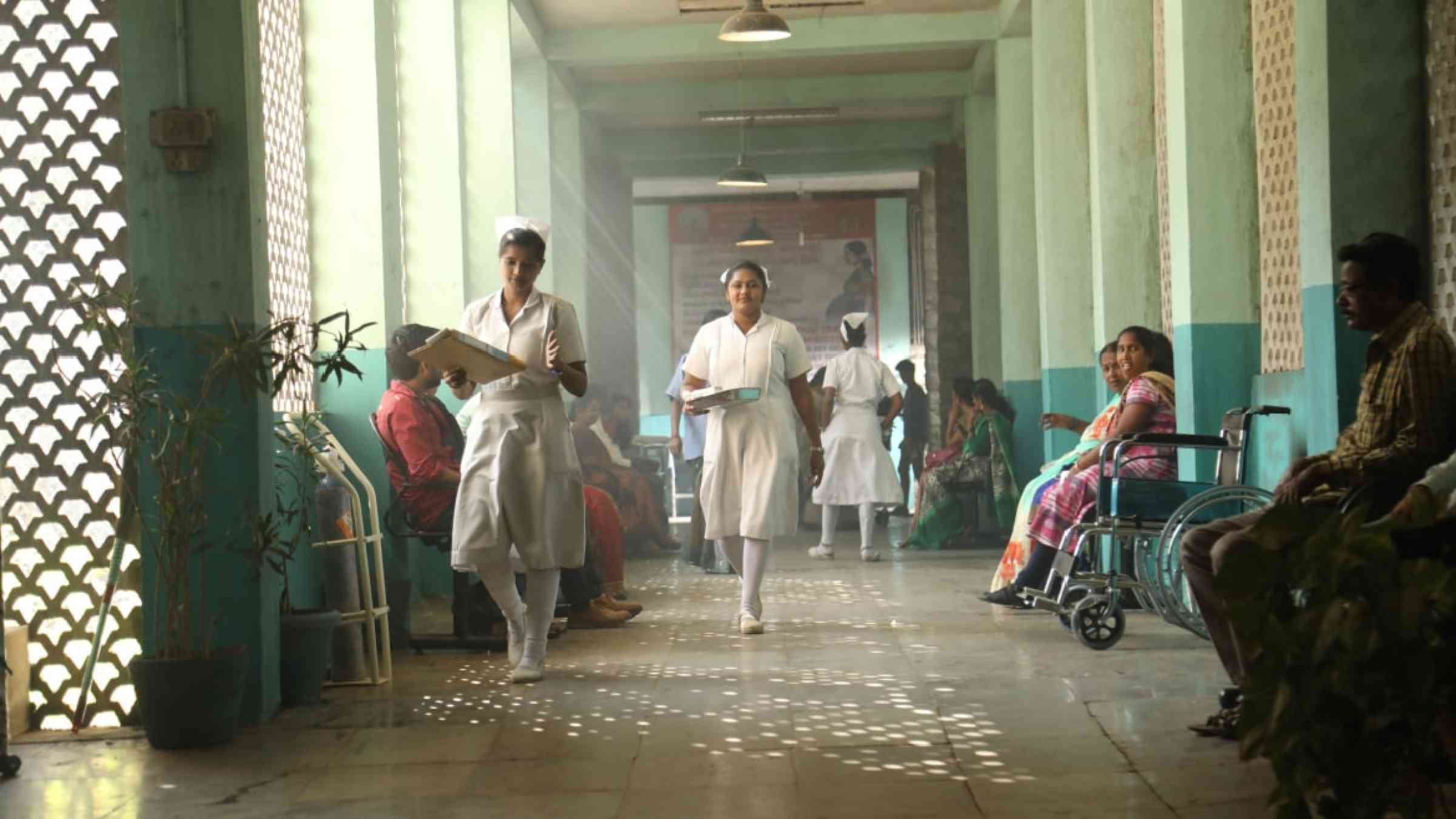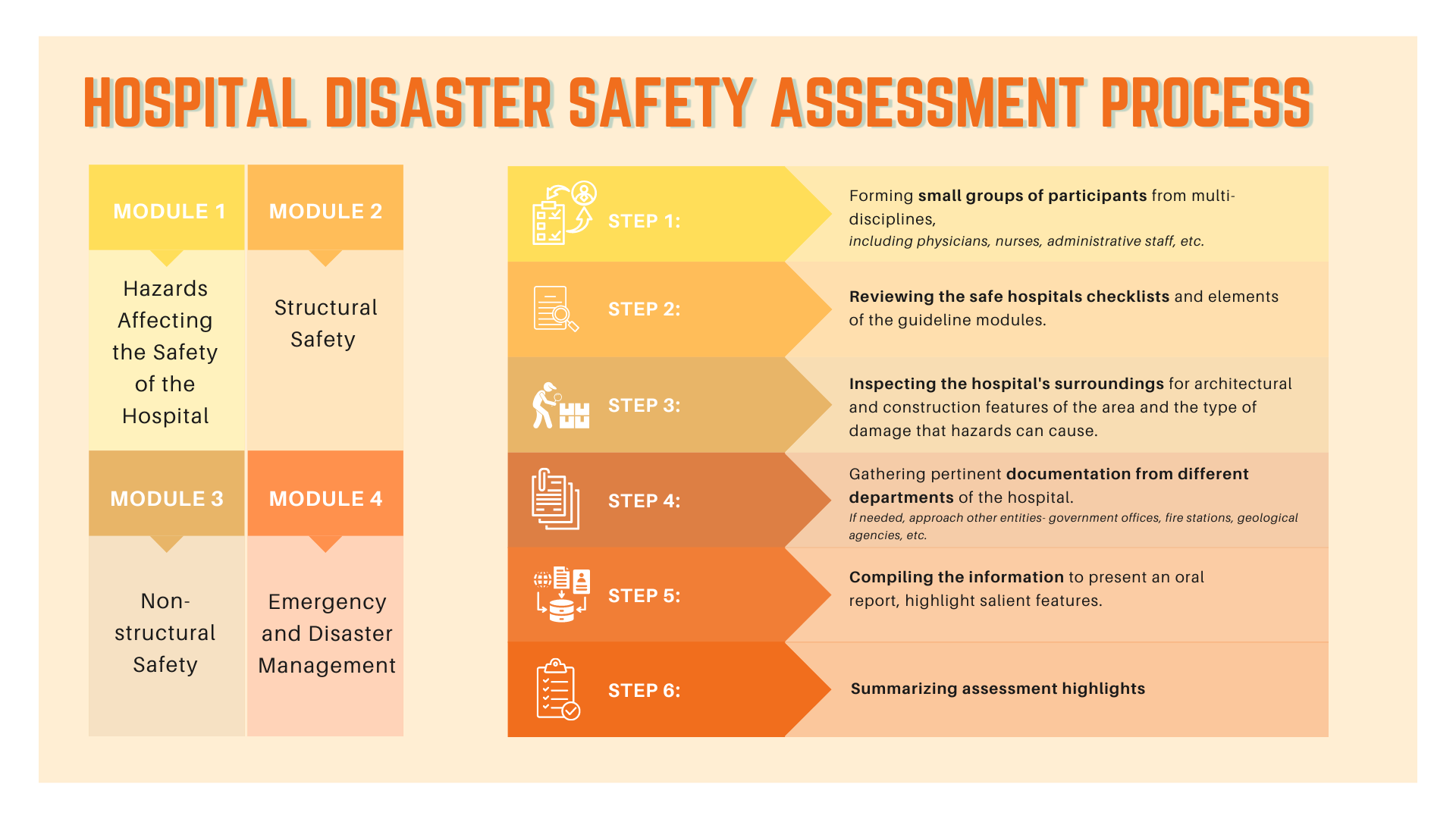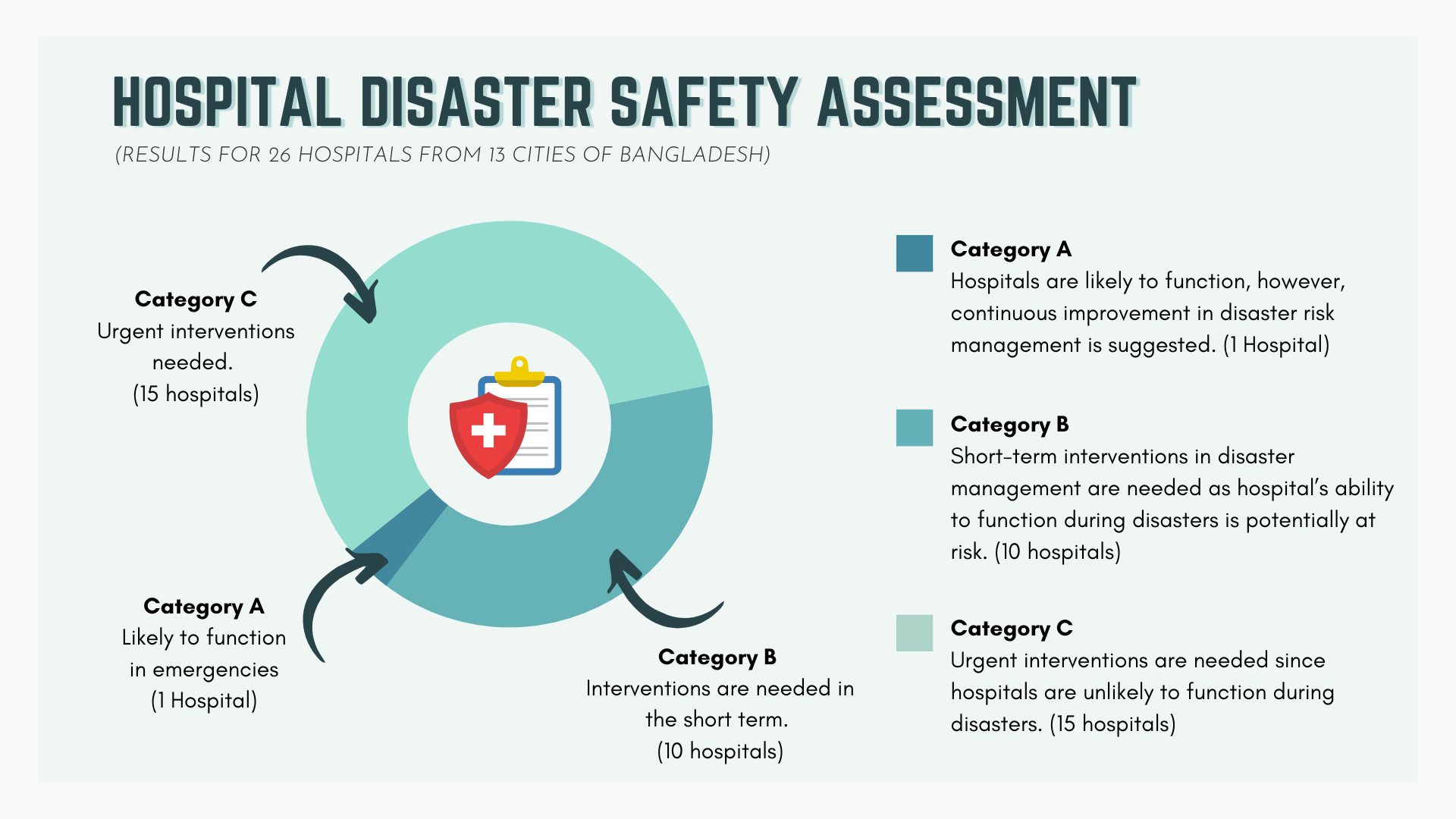Early assessment for timely action on disasters: IDDRR 2022

Early warning systems and preparedness can enable early and timely action to minimize the harm to people, assets, and livelihoods caused by disasters. Understanding the vulnerabilities helps in mitigating the risks of potential hazards. Increasing the availability of multi-hazard early warning systems and disaster risk information is also highlighted as one of the seven targets of the Sendai Framework for Disaster Risk Reduction (SFDRR) 2015-2030. Since hospitals play an important role in reducing people’s suffering during and after disasters, identifying risks and safety gaps becomes even more crucial in health systems. The Hospital Disaster Safety Assessment (HDSA) tool is an essential component in building hospital resilience against disasters in Bangladesh. It guides health facilities to assess their vulnerabilities and identify gaps that affect their ability to provide medical care during and immediately after a disaster or mass casualty event.
International Day for Disaster Risk Reduction 2022 focuses on drawing global attention to the need for developing multi-hazard early warning systems and disaster risk information and assessment for people. This year’s theme aligns with HDSA’s aim to create safer health systems. HDSA introduces the issue of risk assessment, providing early and timely information on the vulnerabilities of hospitals for taking timely action. Hospital management uses this assessment to familiarize themselves with the potential risks that threaten health services and take appropriate preparedness measures to reduce these risks.

Disaster safety assessment process for hospitals using the HDSA guideline.
Developed under the Strengthening Emergency Preparedness and Resilience in Bangladesh (SERB) program, the tool draws inspiration from the WHO’s Hospital Safety Index (HSI). Health authorities use HSI to gauge the probability of continuing normal operations in emergencies. Adopting some of its indicators, the SERB program has contextualized the HDSA tool to address the specific risks affecting the hospitals in Bangladesh.
SERB addresses institutional and technical capacity gaps in disaster response at Bangladesh’s national and local levels. It focuses on developing safer health facilities, and a competent community volunteer force and aims to achieve an integrated approach to emergency management in the country. The program supports the Government, hospitals, and the community to develop an effective and resilient emergency management system.

Gauging resistance to disasters
Initiated in 2013, HDSA has been conducted so far in 26 hospitals covering primary, secondary, and tertiary levels of healthcare facilities in 13 cities in Bangladesh. It has evolved from focusing only on seismic hazards to adopting a multi-hazard preparedness approach. Safety assessments have enabled these facilities to understand hospital safety’s structural, non-structural, and emergency management components.
These assessments uncovered the inherent structural vulnerabilities of hospitals. Since most of these health centers were constructed before the implementation of safety standards and building regulations in the country, it is challenging for these facilities to adapt to climate-induced hazards. Moreover, in addition to other hazards, most parts of Bangladesh are earthquake-prone, further exposing these hospitals to damage and possible structural collapse.
The hospitals also ranked low on the safety of critical supply systems. Power grids, water supply piping, heat supply, ventilation systems, medical equipment and devices, and fire security, among other essentials were found to be inadequate.

HDSA results from assessments conducted in 26 hospitals across 13 cities in Bangladesh.
Prescribing Better Practices
Most of the gaps identified in the safety of hospitals highlight the absence of formal plans, systems, and organizational structures to reduce disaster risk and manage emergencies. This poses a significant threat of functional collapse, due to the hospital’s inability to perform a coordinated disaster response. With climate change and constantly evolving hazards, it becomes even more critical to strengthen hospitals and enhance disaster preparedness in the health sector.
Some recommendations to enhance preparedness include:
- Regular training of hospital staff on fire emergencies. As fire emergencies are the most common hazard that hospitals face, the staff should be upskilled in fire prevention, safe evacuation, and the use of equipment.
- Formation of a fully functional Hospital Disaster Management Committee with clear roles and responsibilities for each member.
- Establishment of an emergency management system to increase the effectiveness and efficiency of coordinating the whole hospital emergency response. Hospital Incident Command System (HICS) training, under the SERB program, develops a hospital incident command team to enhance coordination during disasters.
- Establishment of a fully functional network and linking of plans between local health facilities, and district-level disaster management programs and committees implemented by the government and response forces of Bangladesh.
- Set up Hospital Emergency Operations Centre (EOC) with equipment and supplies to be readily available to set up and facilitate command, control, coordination, communications, and information management functions during a crisis. The EOC should be backed up by an information management system that supports emergency operations and link the data from the hospital’s information management system.
- Establishment of an all-hazards hospital response and recovery plan that defines actions to be taken to manage crisis and quickly recover normal functions of the hospital and build back better after an emergency or disaster. The recovery plan should provide continuity of recovery and rehabilitation of patient services. SERB’s Hospital Emergency Response Plan (HERP) supports health centers in developing comprehensive plans for disaster preparedness.
- Conduct simulation exercises/drills for capacity-building purposes with the involvement of various departments of the hospital.
- Establish a mechanism of learning and lessons learned through After Action Review (AAR) and corrective action planning. This exercise will enhance the continuous capacity development of hospitals to effectively prepare for, respond to and recover from the impacts of hazards leading to disaster resilience.
Trained hospital staff, coupled with a well-designed emergency plan can help reduce the response time and enhance hospital resilience against disasters. SERB interventions cater to the global framework of strengthening emergency response systems of critical facilities and reducing the risk to life and livelihoods for communities in vulnerable regions.
